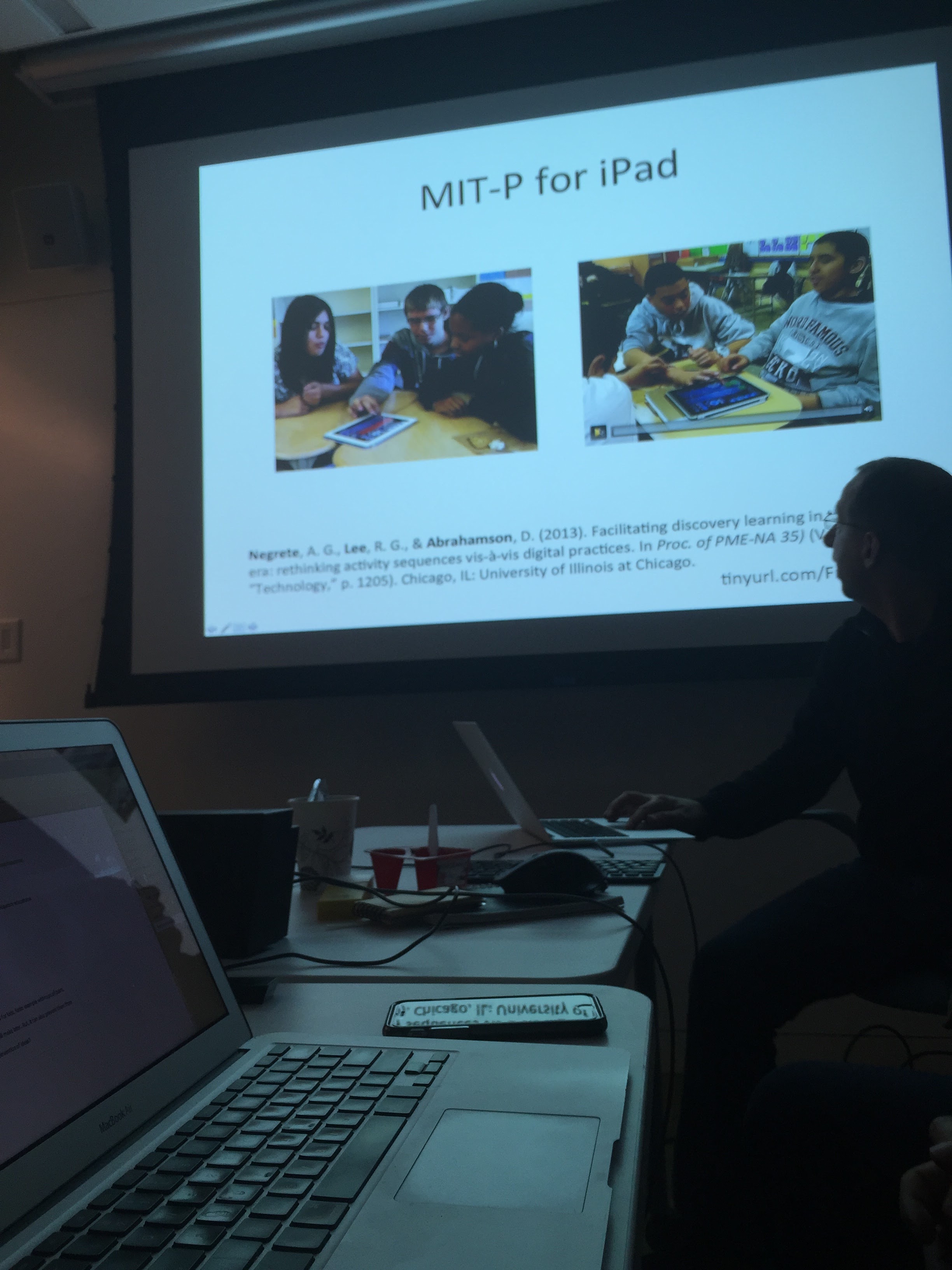This week the reading group (Camila, Anastasia, Edrik) presented a summary of the week’s readings – Freire & Blikstein.

We then did a group exercise on creating a new makerspace – our group’s constrain was to be in an informal environment. We thought of a space in a shopping mall with several making stations and prototyping materials with a monthly topic/challenge such as water conservation to inspire projects and solutions for it. Introductory activities are available separated into distinct suggested durations of 5, 10, or 30 mintues.
We then had a very interesting talk with Dr. Dor Abrahamson, Associate Professor, Cognition & Development, University of California, Berkeley.
Design by Theory, Theory by Design: Evolution of a Design-Based Research Project / Dor Abrahamson, 2016-01-28 TLTL, Stanford
Designing educational artifacts can be more than engineering, fabricating, and evaluating products. Rather, the practice of design can serve as a context for pursuing unresolved questions from educational scholarship relating to phenomena of learning and teaching with artifacts. In this presentation, I will survey an on-going design-based research project that seeks to illuminate relations between physical action and conceptual learning. The project, which began in Fall 2008, has gone through multiple iterations using different technologies. Currently the key build, the Mathematical Imagery Trainer, consists of an interactive NUI system in which students learn to move their hands in a new coordination as their solution to the problem of manipulating virtual objects in accord with an assigned task objective. Only once they have developed this new “choreography,” we introduce into the problem space various tools for mathematical modeling, such as a grid and numbers. I will share empirical data from eye-tracking experiments, in which we see students mentally construct new objects on the screen; these objects are then used to explain proportional relations. I will comment on the relevance of this work more broadly for understanding how higher-order reasoning emerges from sensorimotor interaction as well as what all this might mean, moving forward, for educational design.


